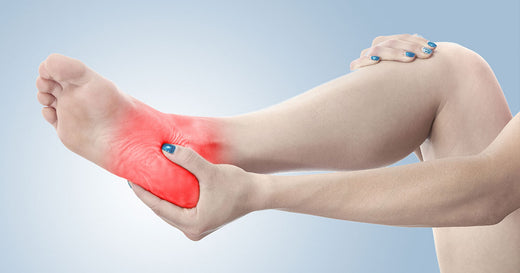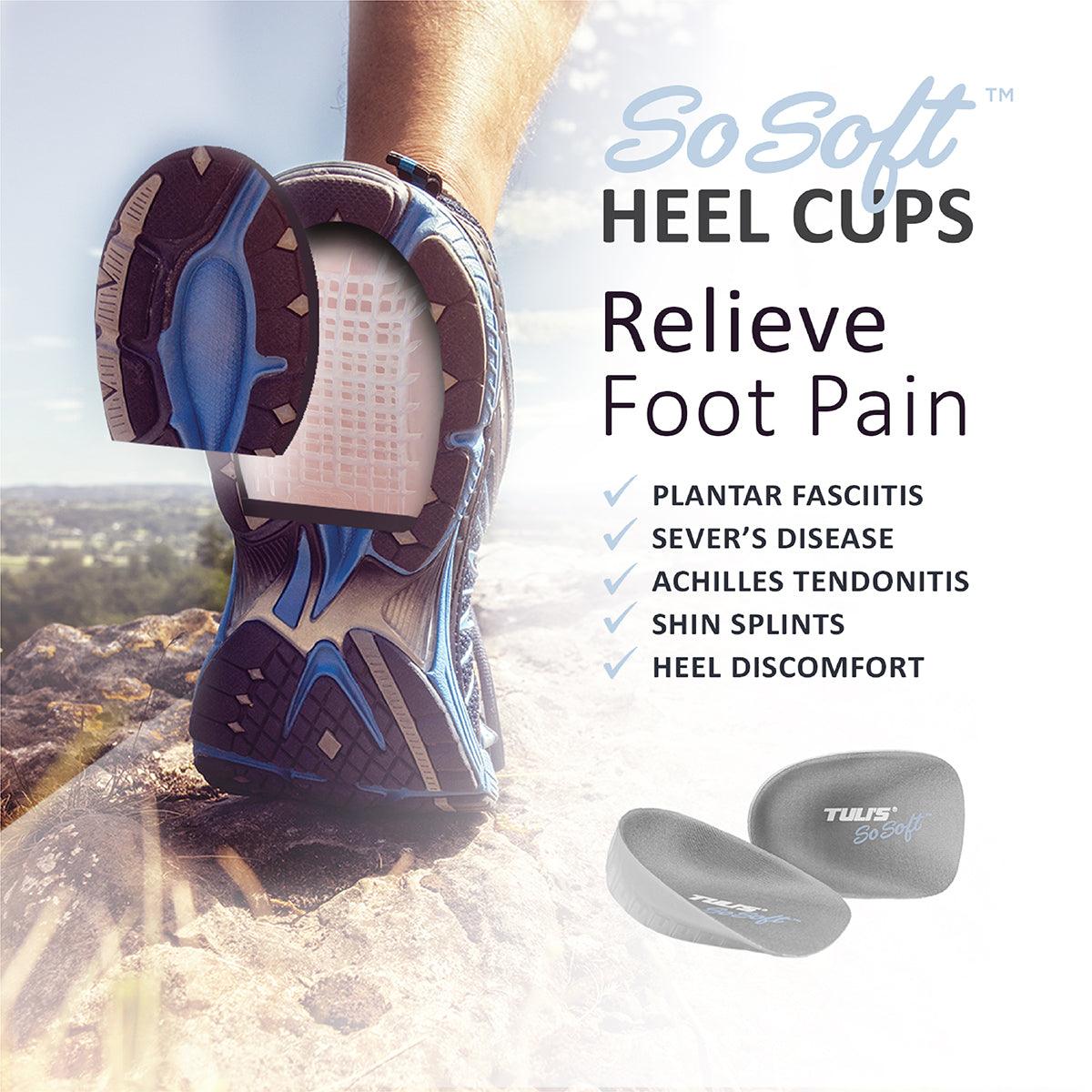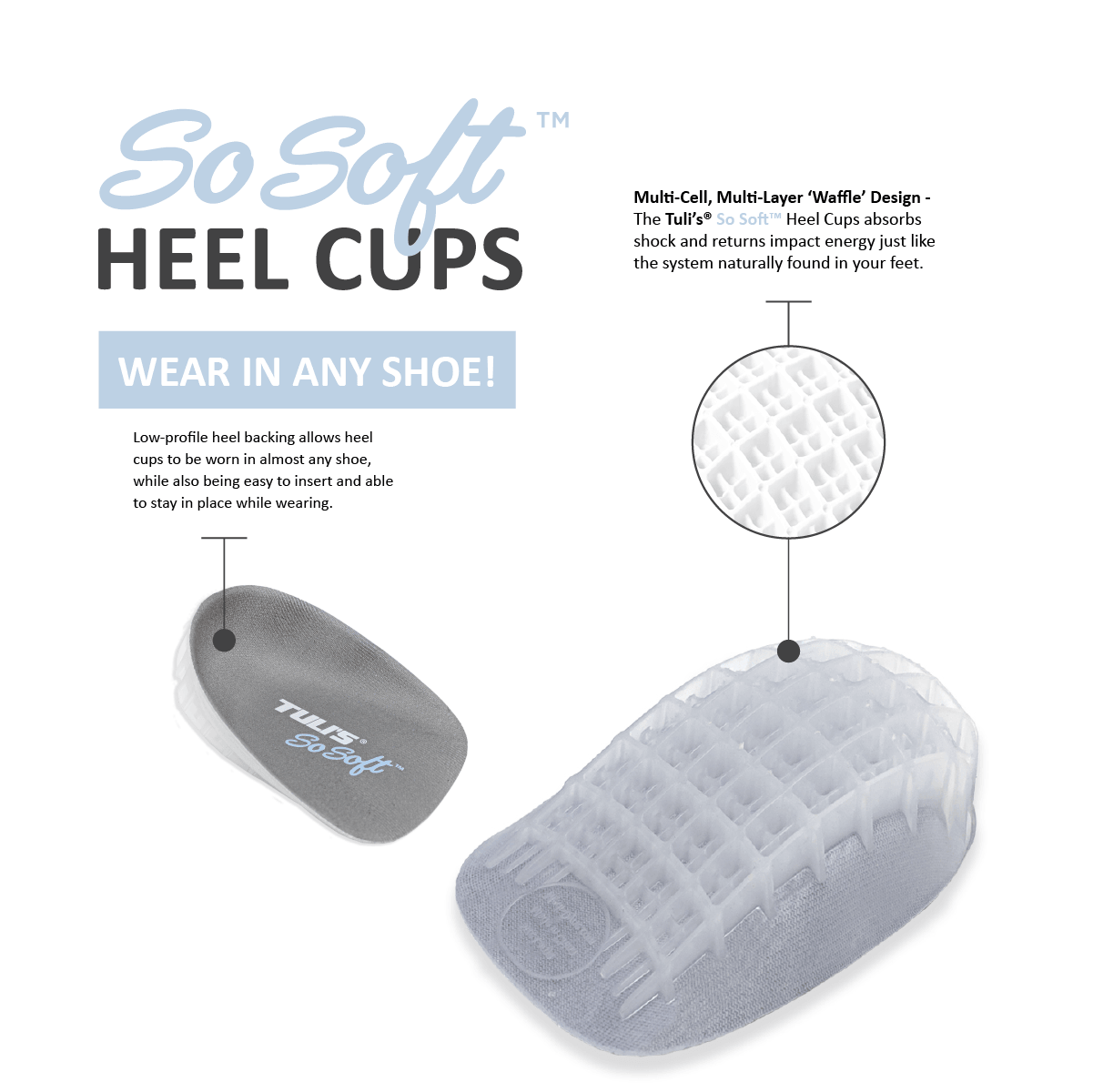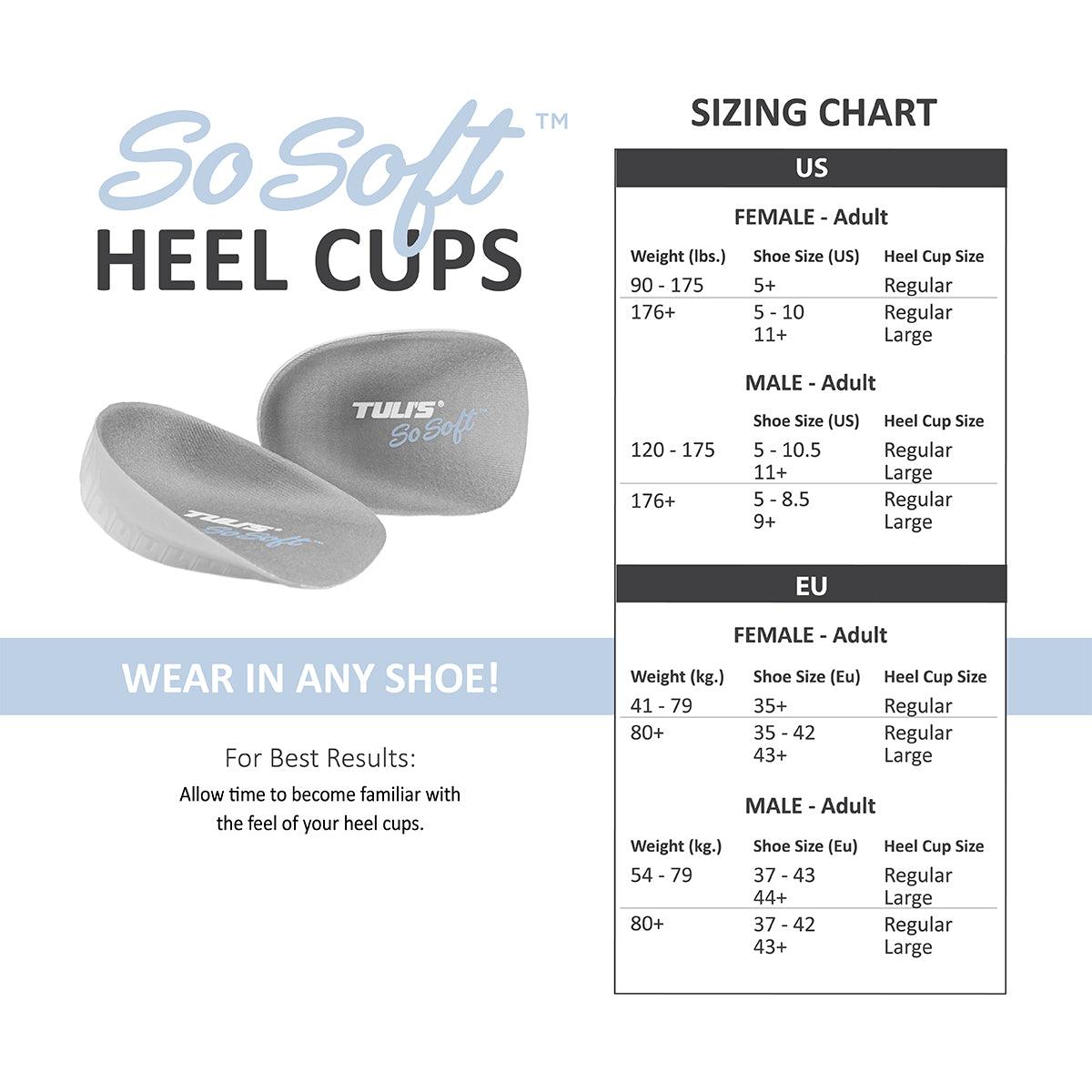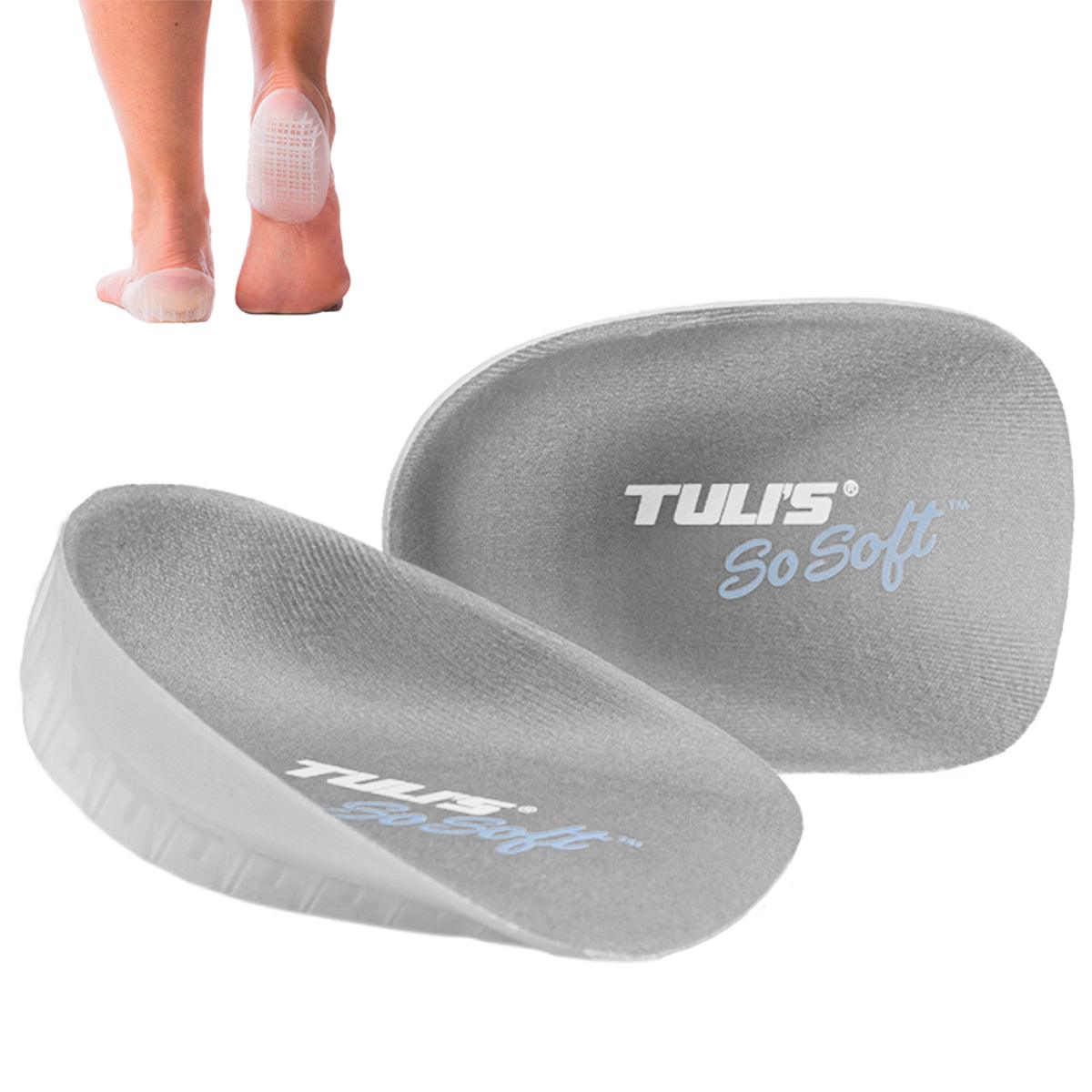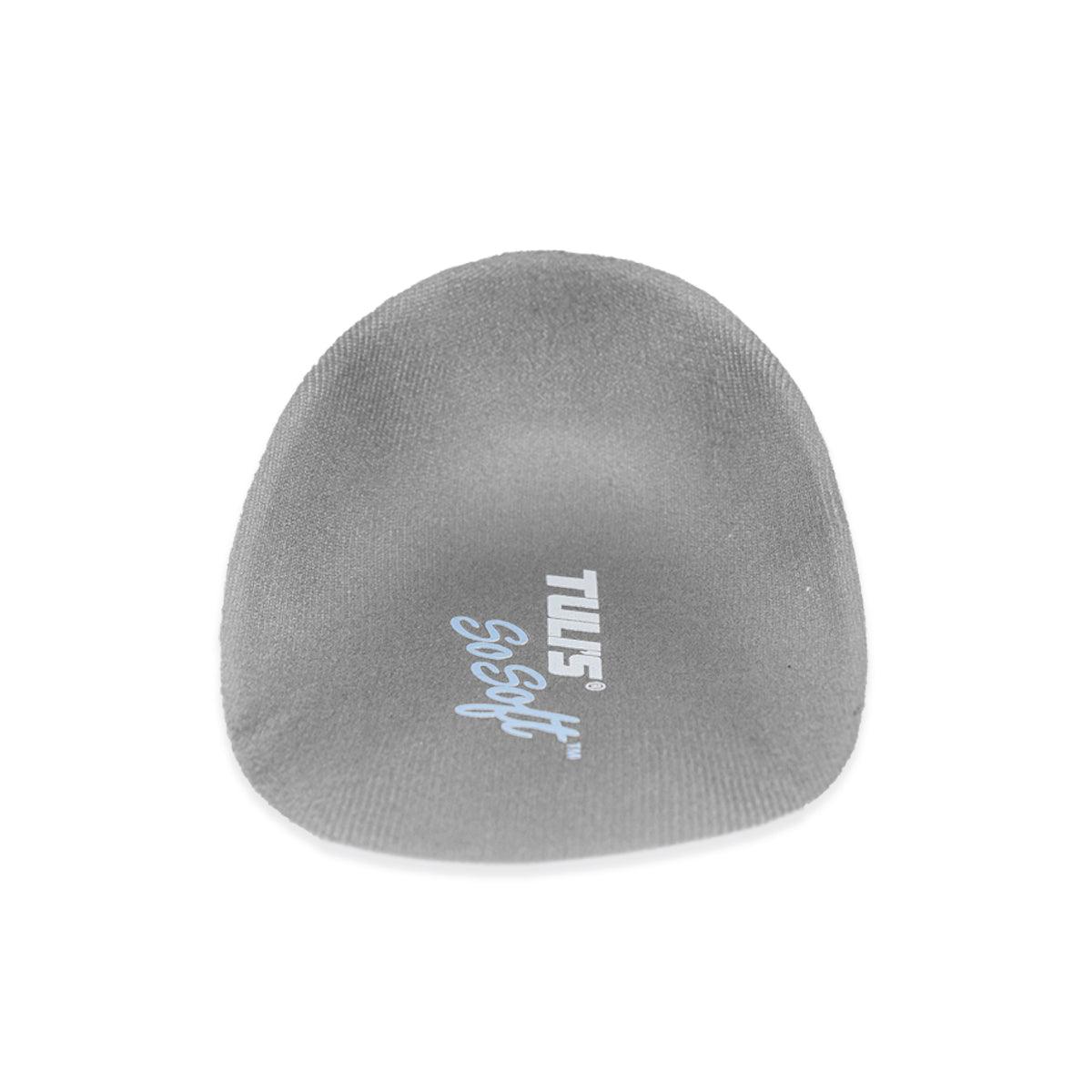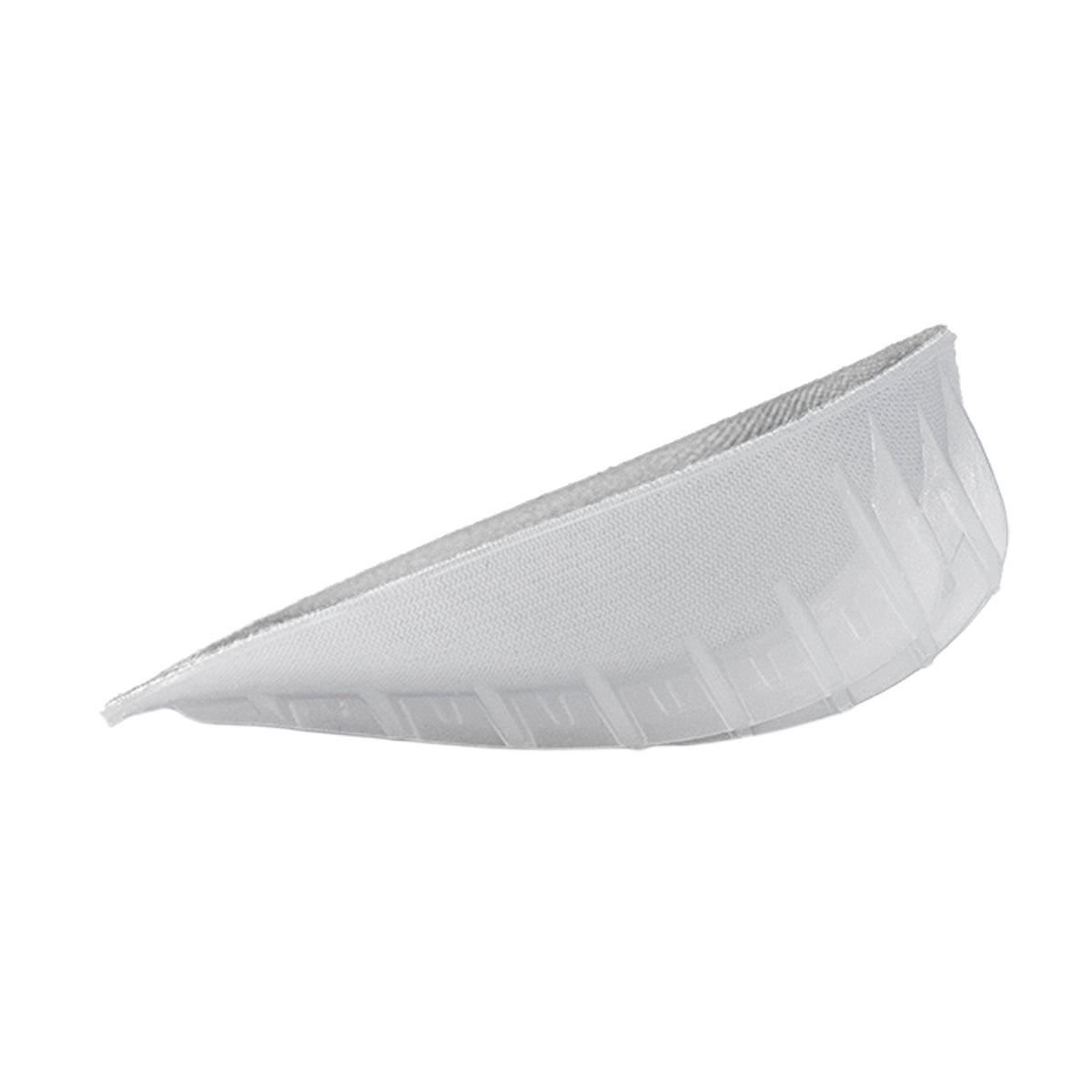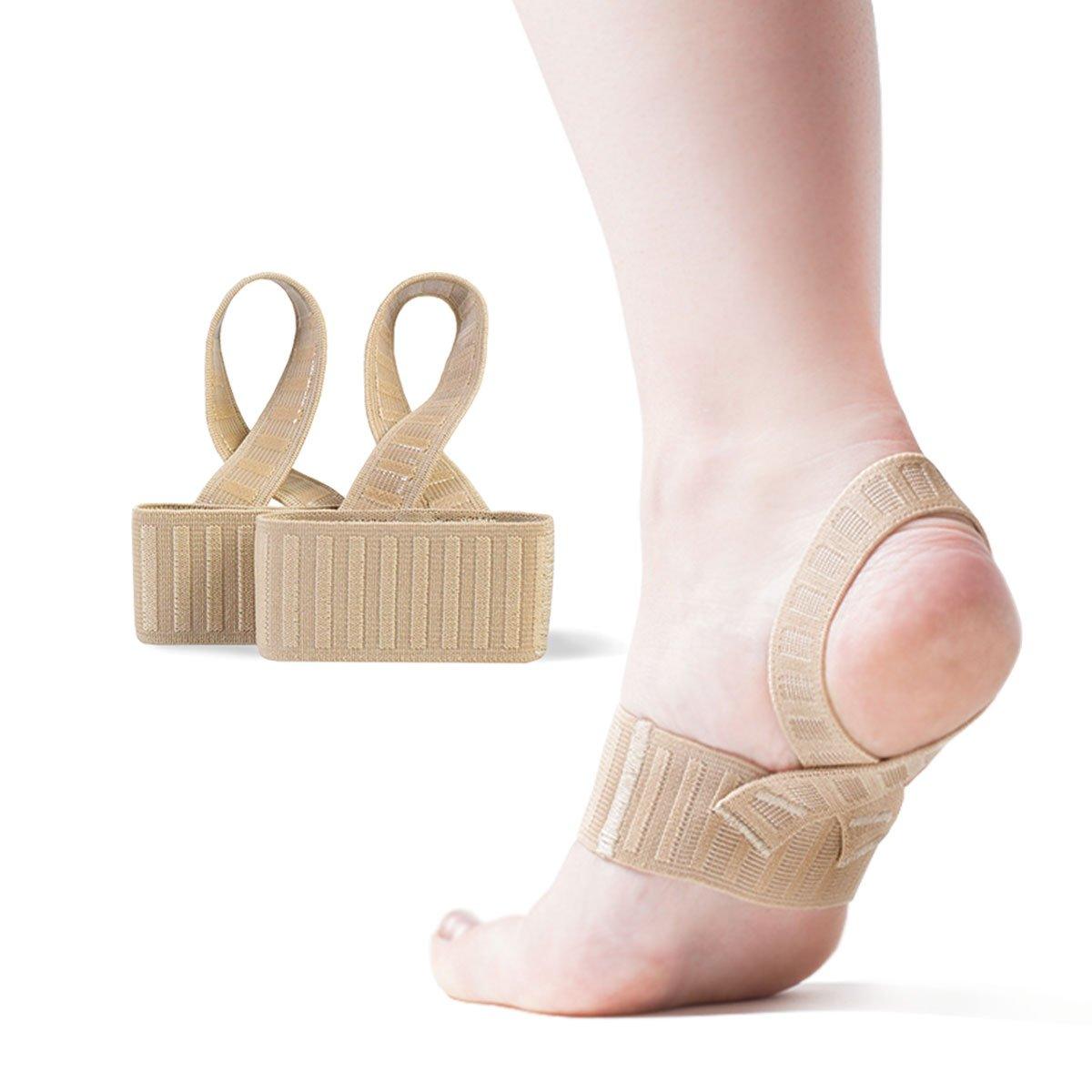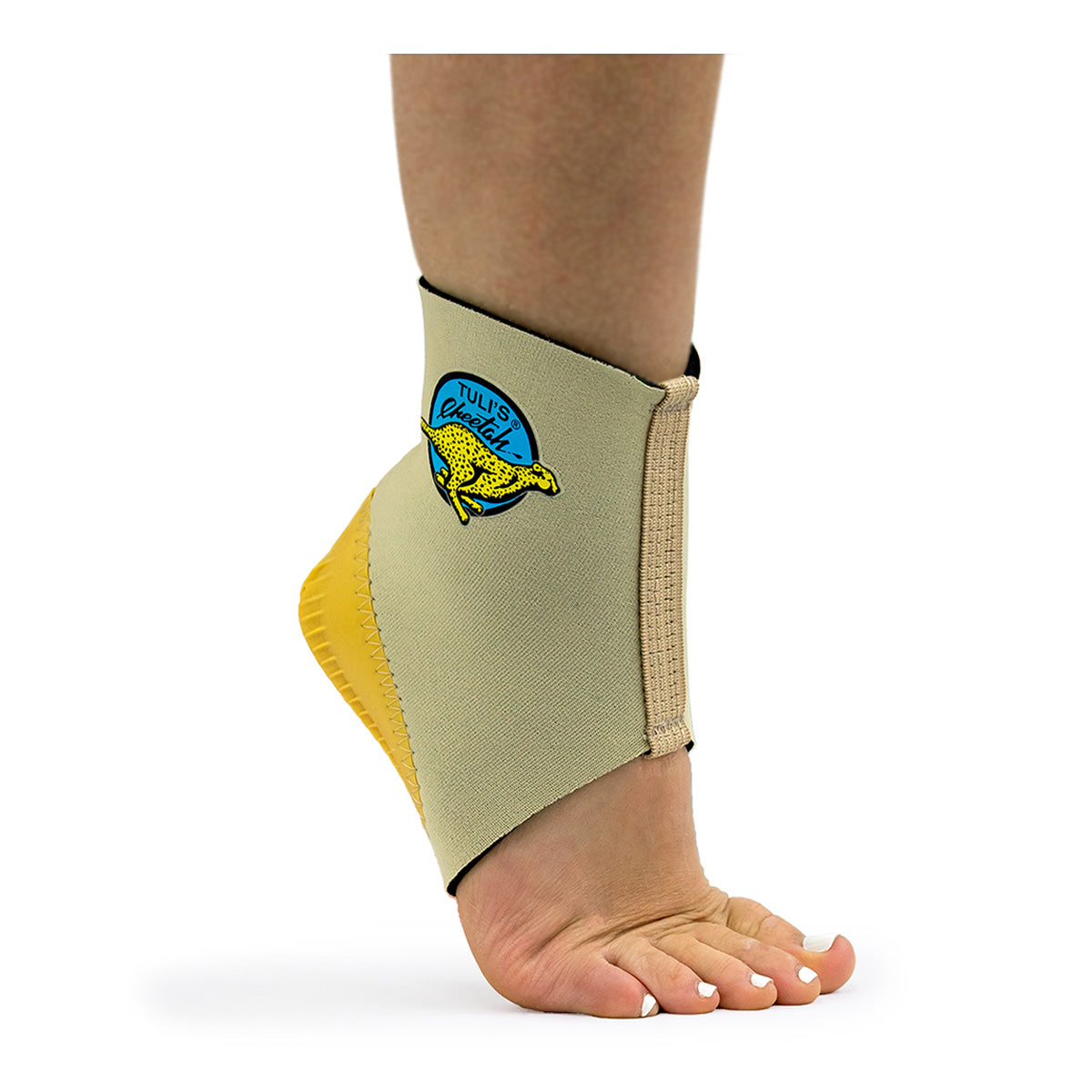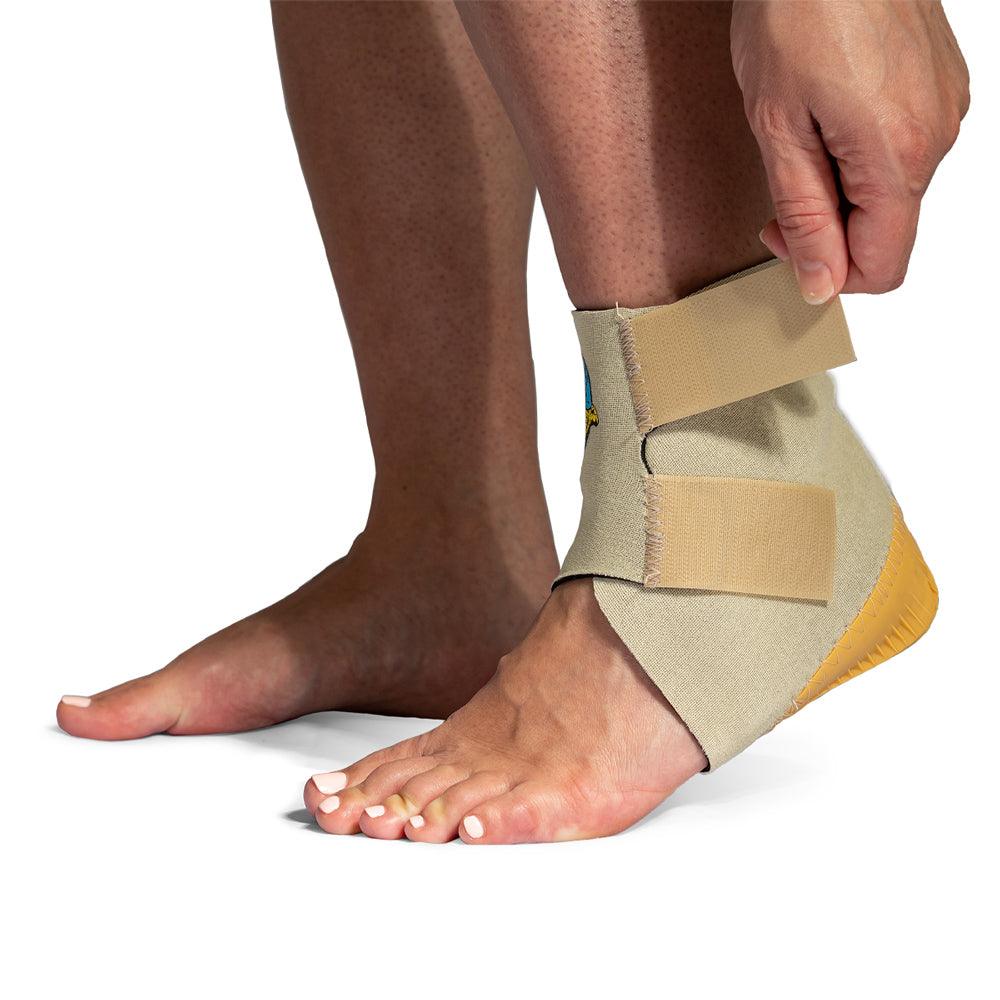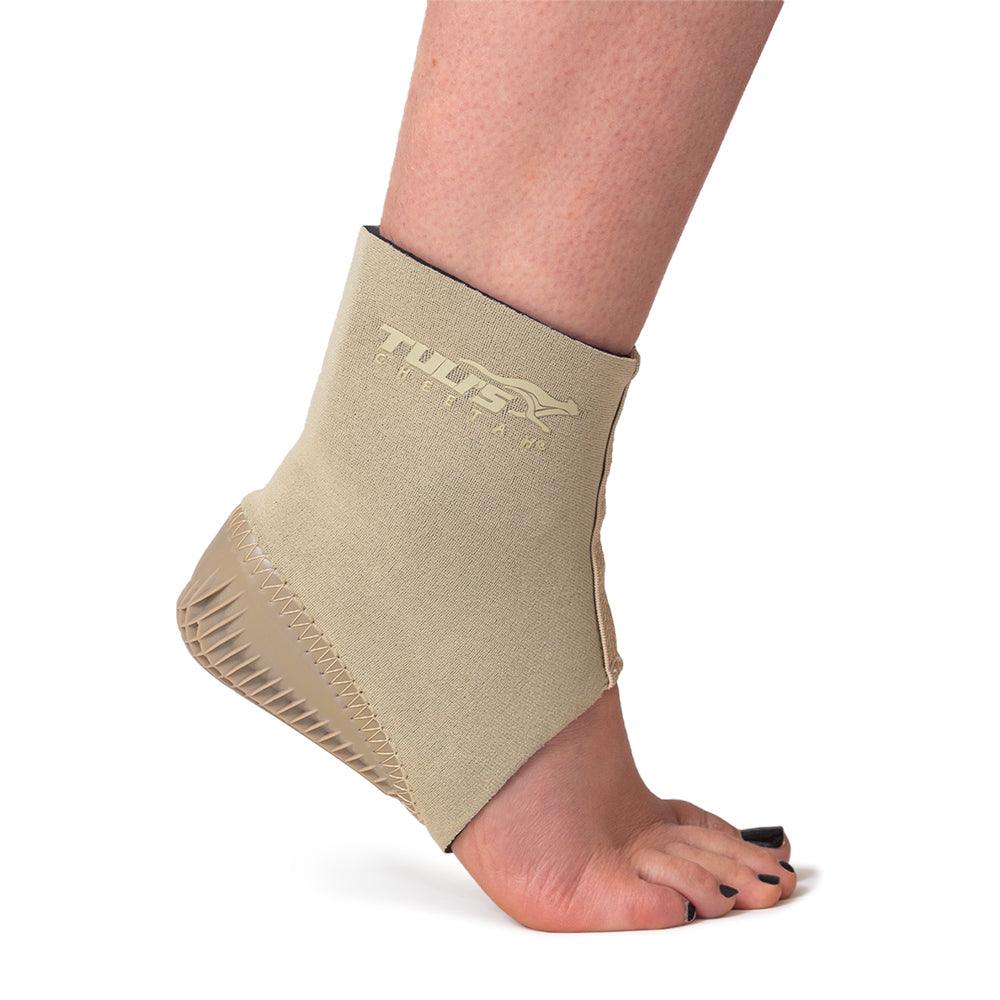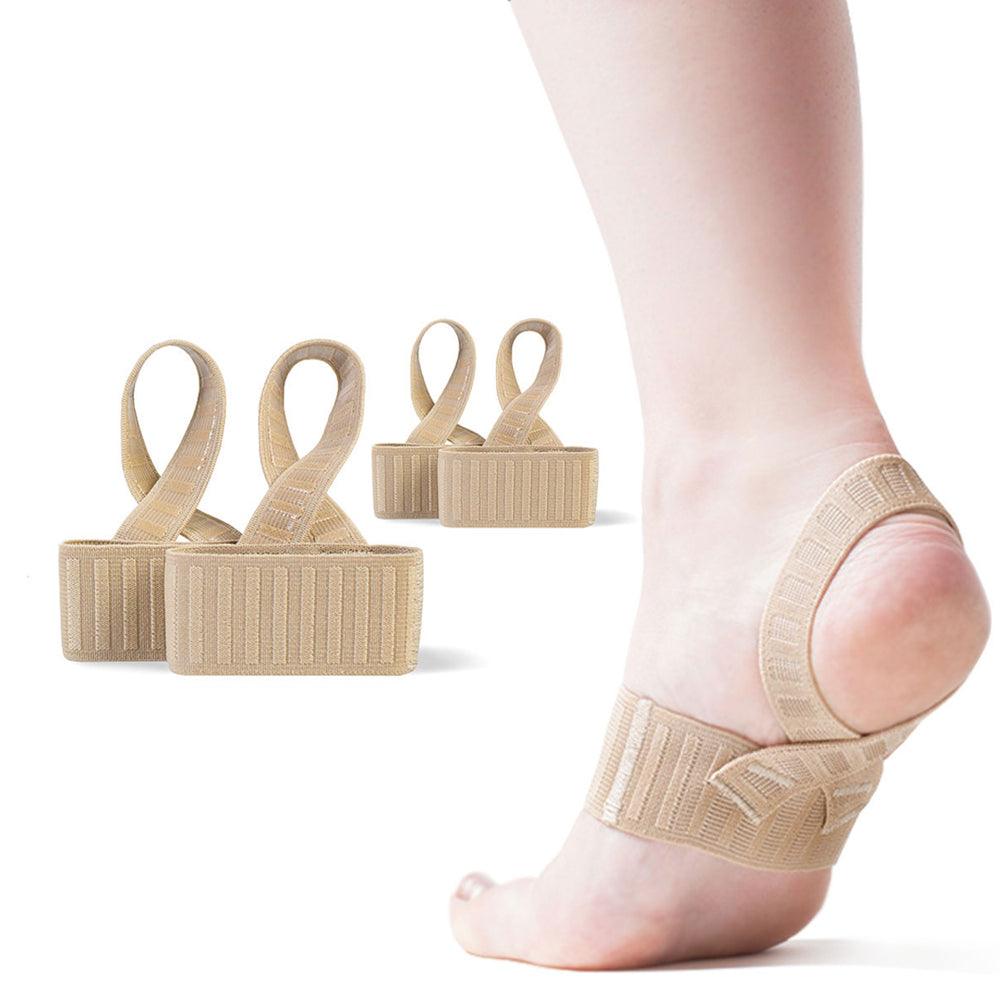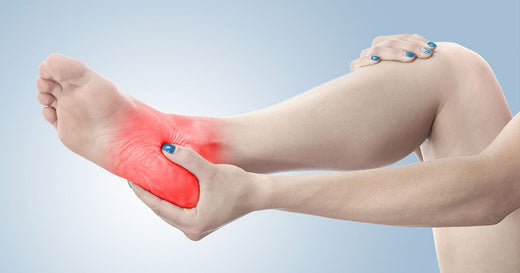It is important that you maintain a good range of mobility and flexibility in your interconnective chain. Ensuring flexibility in the lower leg is one of the best steps you can take towards preventing and/or healing plantar fasciitis and other common heel pain issues.
Heel pain exercises are essential to maintaining that flexibility in order to prevent unnecessary pain. Something that is important to keep in mind is that when you participate in heel pain exercises, you need to protect the painful portion of the heel with the proper equipment. Heel cups can provide you with the protection, cushioning, and support you need while engaging in exercises and stretches for heel pain.
Stretching Exercises for Heel Pain
Doing stretches for heel pain for at least 10 minutes a day will drastically reduce the amount of pain you have felt. Some heel pain exercises and stretches that Medi-Dyne recommends include:
1. Standing Wall Calf Stretches
A traditional standing wall calf stretch is one of the best heel pain treatment exercises because one of the most common causes of heel pain is tight calf muscles.
- Stand in front of a wall with arm’s length away.
- Put one foot in front of the other. Gently bend the front knee, making sure to keep your back knee straight and that heel on the floor.
- Stretch for 20-30 seconds, then switch legs.
Recommended product for an advanced calf stretch:
ProStretch Plus® – Using the toe lift mechanism of the ProStretch Plus, you can experience a deep stretch along the plantar fascia, delivering the ultimate in pain relief.
2. Mock Sit
- Get into a standing wall calf stretch position.
- Then, gently squat and lean forward as if you were going to sit, keeping your heels flat on the floor.
- Hold for 10-15 seconds. Switch legs and repeat.
3. Towel Stretch/Foot Flexes
Sit on the floor. Roll a towel lengthwise and put your foot in the middle of it, holding the towel securely on each side. Maintain your leg straight and gently pull the towel, which will pull the top of your foot back toward you and stretch your calf, heel, and bottom of your foot. To enhance your stretch you can use a belt or a StretchRite instead of a towel.
StretchRite® – Sit on the floor with your legs stretched out in front of you. Keep your knees locked. Wrap the StretchRite® around the ball of your foot and pull back on each of the handles. Hold for ten seconds, release, and move to the next foot. Do this three times per foot, and twice a day.
4. Plantar Fasciitis Stretch
- Sit down. Keep your left leg bent with your foot flat on the floor.
- Pull your right leg up and cross it over your left so that your ankle is resting on your knee.
- Using your right hand, gently pull your toes back, stretching the bottom of your foot.
- Hold for 10-20 seconds.
- Repeat twice, then switch legs.
5. Towel Curls
- Sit in a chair and place the towel under your feet.
- Curl your toes so that you scrunch and draw the towel toward you.
- Repeat five times with each foot.
- Towel curls help strengthen the foot muscles.
6. Toe Pick Ups
Place approximately 20 marbles (or objects of similar size) on the floor and use your toes to pick up each marble. Like the towel curls exercise, this is one of the heel pain exercises that’s also great for strengthening foot muscles.
7. Calf Raises
Calf raises done on a step will help stretch as well as strengthen the muscles. First, stand on a step with your heels hanging over the edge. Lower your heels to stretch. Raise them to strengthen.
8. Toes on the Wall Stretch
- Stand in front of a wall, placing the toes of your right foot on the wall and keep your heel on the floor.
- Put your hands out and in front of you as if you were going to do a push up against the wall.
- Then, bend your arms, bringing your body closer to the wall.
- Hold for 15-30 seconds.
9. Bent Calf Stretch
- Stand in front of a chair or coffee table.
- Roll up a towel or small blanket.
- Stand on it with both of your feet, keeping your heels on the floor.
- Bend forward, using the table or a chair as support as you stretch the muscles.
- Hold for 30 seconds.
- Repeat, but this time with slightly bended knees.
- Hold for 30 seconds.
10. Seated Foot Roll
To help relieve plantar fasciitis symptoms, sit on a chair, and keep good posture. Using a full, frozen water bottle, roll your foot arch back and forth for about a minute while applying pressure to massage your arch. Whenever working with frozen temperatures, make sure to do not apply directly to the skin using an everyday household towel to help offer some protection from the cold.
Recommended Product: Footy
How to Prevent Heel Pain?
If you want to know how to prevent heel pain, there’s good news. It is an easy condition to prevent. One of the most important things you can do when learning how to prevent heel pain is to stretch for at least ten minutes a day.
Warming up, stretching, and performing heel pain treatment exercises will help. It will take some extra time, but it’s worth it.
Are you dealing with more than just heel pain? Check out our Pain Solution Center, where you’ll find tips and product recommendations that can help ease your pain.
OTHER RELATED TOPICS:
HOW ARE PLANTAR FASCIITIS INSOLES DIFFERENT FROM REGULAR INSOLES?
5 THINGS A PLANTAR FASCIITIS INSOLE MUST HAVE TO BE EFFECTIVE
5 BEST HEEL CUPS FOR PLANTAR FASCIITIS
PLEASE NOTE: The information on this website and article is for information only and should not be used as a substitute for consulting your doctor. Consult your doctor for proper diagnosis and rehabilitation.




